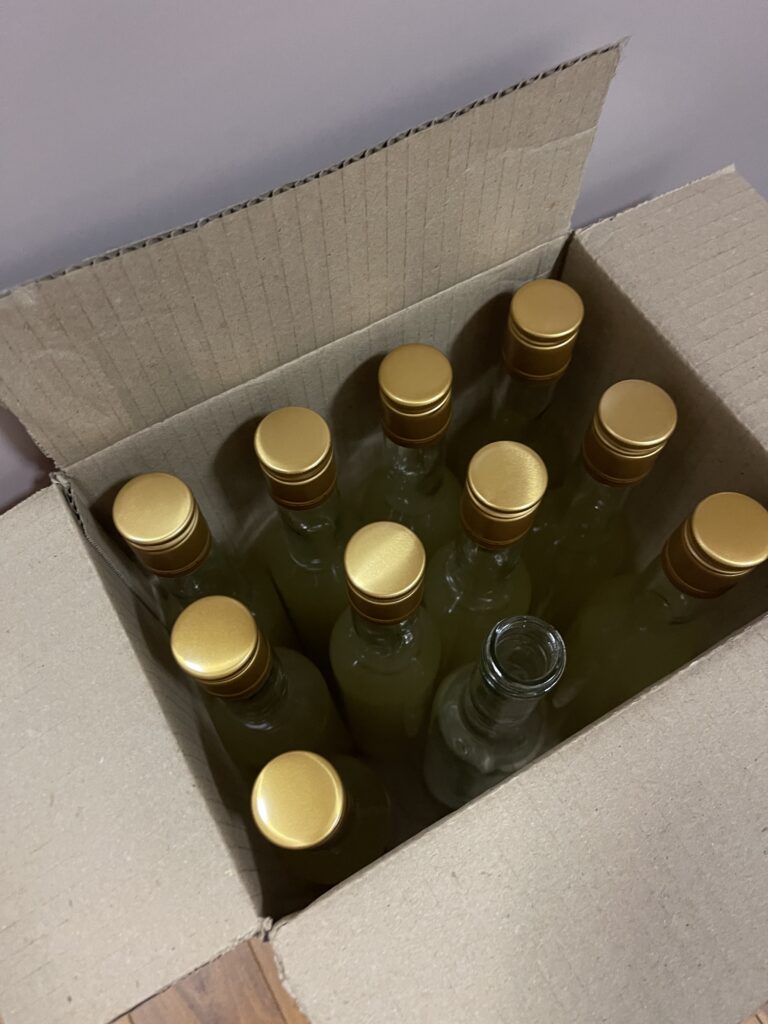Nestled in the lush landscapes of New South Wales, an artisanal mead has emerged, capturing the essence of the Southern Highlands. Our latest creation, the Southern Highlands Honey Harmony Mead, is a testament to the rich floral tapestry of the region and the meticulous craft of mead-making. Join us as we unveil the journey of crafting this exquisite drink, from the raw honey sourced from Bowral to the final bottle.
The Sweet Beginning: Sourcing the Honey
Our journey begins with 1665 grams of raw honey, sourced directly from the vibrant bee hives near Bowral. At $32.95 / kg the honey would have cost about $55. This isn’t just any honey; it’s honey that reflects the character of the Southern Highlands, carrying the subtle floral notes and the pure essence of the region’s diverse flora. The quality of this honey isn’t just tasted; it’s felt in every sip of the mead it creates.
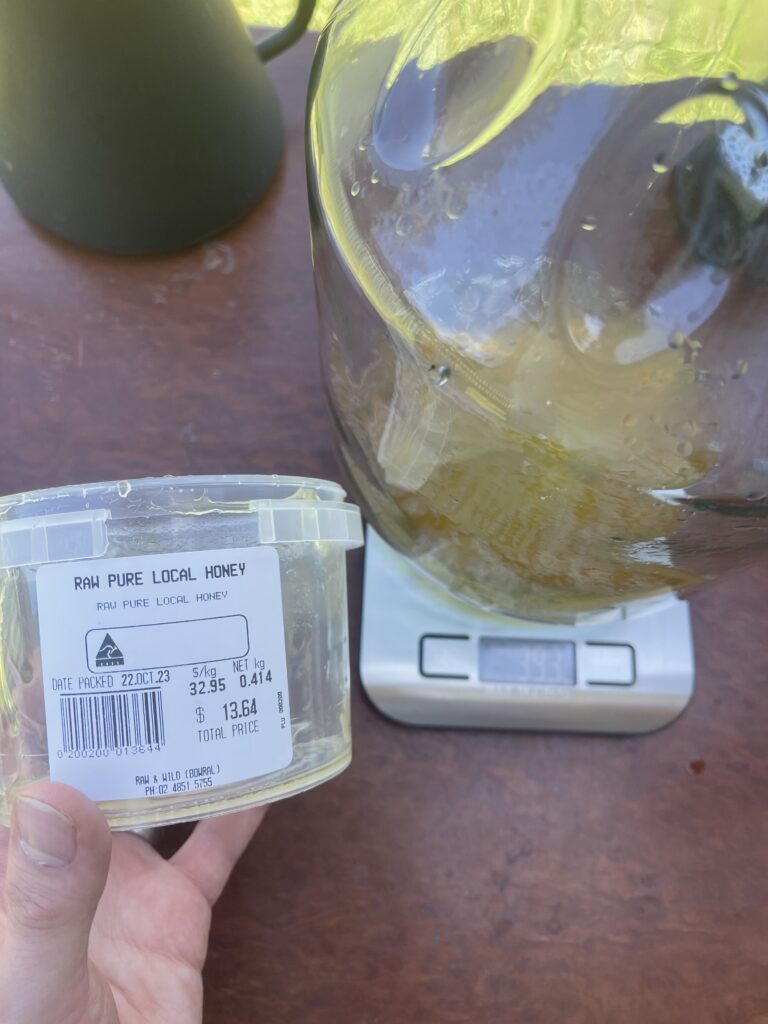
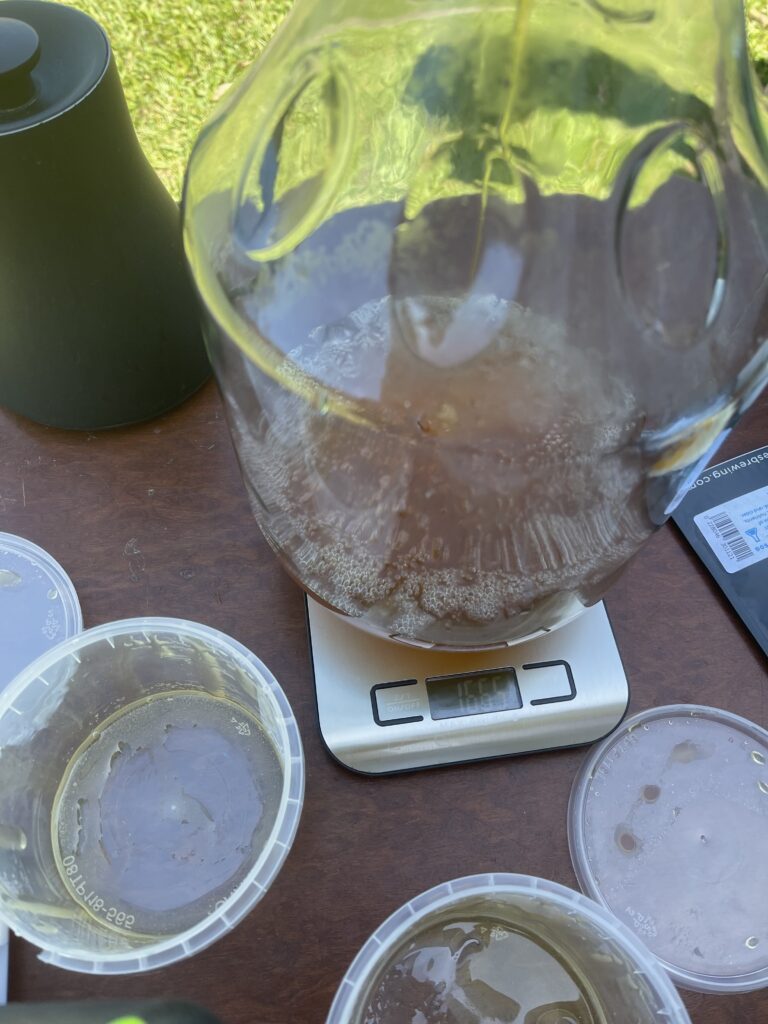
The Yeast’s Tale: Mangrove Jack’s Mead Yeast M05
The transformation from honey to mead begins with fermentation, and for this, we’ve chosen the reliable Mangrove Jack’s Mead Yeast M05. Just 10 grams of this potent yeast is enough to catalyse the magic. It’s not just about converting sugars into alcohol; it’s about doing so while enhancing the natural floral aromatics of the honey, ensuring that every note of the Southern Highlands is captured.
A high ester-producing strain conferring fresh, floral esters, especially when fermented cool. This yeast has high alcohol tolerance and ferments well over a wide temperature range. Suitable for all styles of mead. For best results, ferment at 15-30 degrees Celsius.
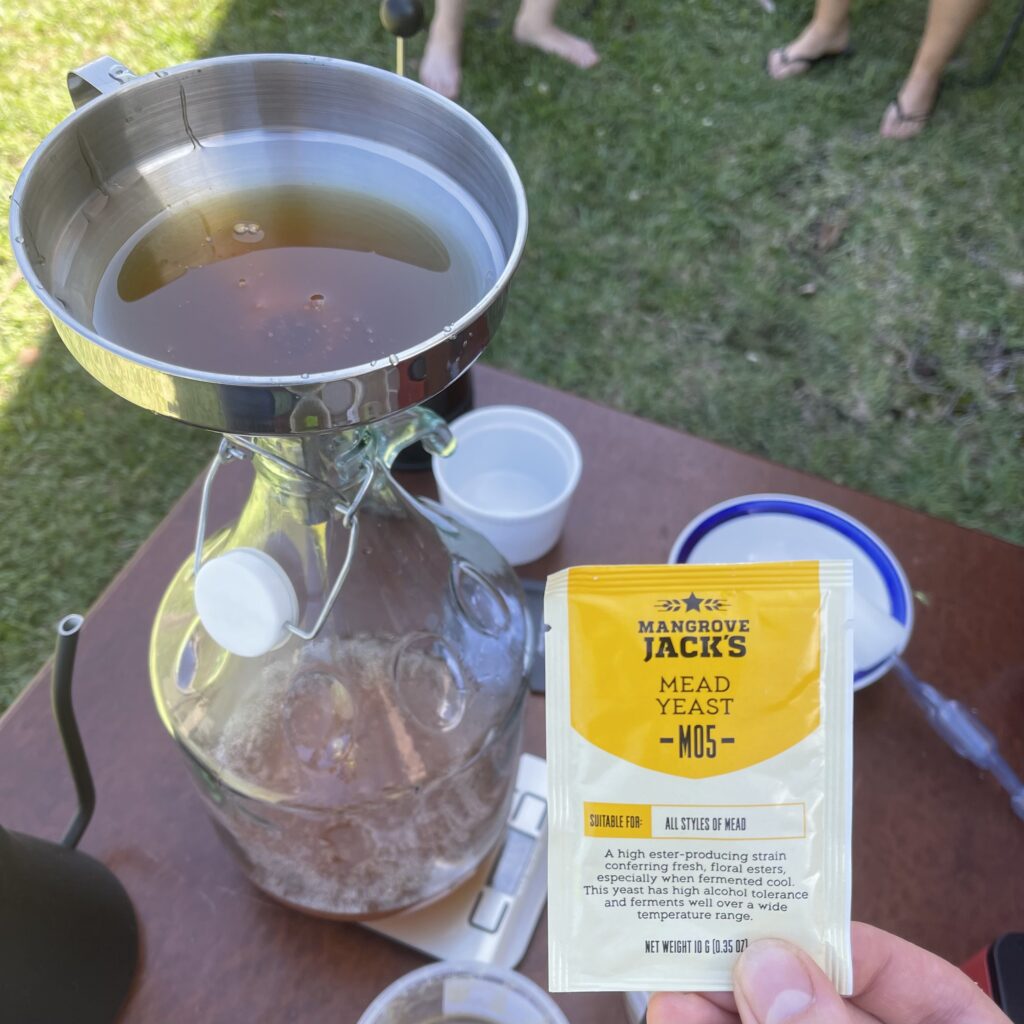
Measuring the Magic: Hydrometer Readings
Precision is key in mead-making, and our hydrometer readings provide the roadmap. We started with a gravity of 1.110, a number that signifies the potential alcohol content and the sweetness of the resulting mead. Over 15 days of fermentation, we watched as the yeast worked its magic, slowly lowering the gravity, transforming the sugars into a harmonious blend of alcohol and flavor.
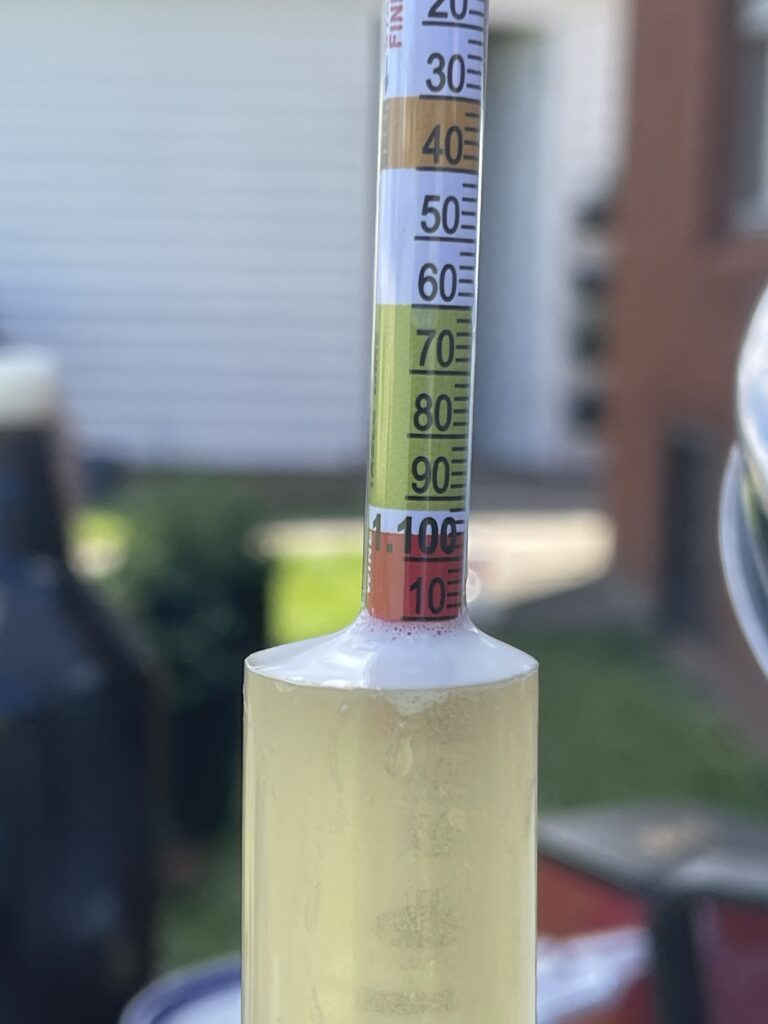
The Art of Stabilization: Campden Powder
After 15 days, the fermentation process was paused with the addition of Campden powder. This isn’t just about stopping the yeast; it’s about stabilizing the mead, ensuring that the flavors and aromatics are perfectly preserved, and preparing it for the next phase of its journey.
The Final Gravity: A Measure of Perfection
Our final gravity reading was 1.018, indicating an alcohol content of 12-13%. This is where science meets artistry. The final gravity not only tells us about the alcohol content but also gives us a glimpse into the residual sweetness, the body, and the overall character of the mead.

Clarity and Character: Cold Crash and Racking
After 28 days, the mead underwent a cold crash, a process designed to enhance its clarity and refine its character. This is a period of rest, a time for the mead to settle, for the flavors to meld, and for the clarity to emerge. The next day, the mead was carefully racked and bottled, a process that ensures the clear, vibrant liquid is transferred into bottles without disturbing the sediment.

The Final Count: 10.75 Bottles of Mead (~4 Litres)
From a 5L carboy, we were blessed with 10.75 bottles, each holding 375ml of the Southern Highlands Honey Harmony Mead. It’s a limited batch, each bottle a treasure, a liquid ode to the Southern Highlands and the art of mead-making.
In conclusion, the Southern Highlands Honey Harmony Mead is more than just a drink; it’s a journey through the heart of New South Wales, a dance of flavors and aromas, and a testament to the craft of traditional mead-making. From the raw honey of Bowral to the final bottle, every step is a testament to the dedication to quality and flavor. We invite you to savor this mead, to taste the Southern Highlands, and to join us in celebrating the art of mead-making.
